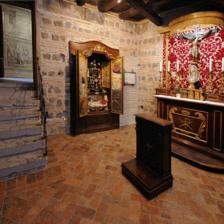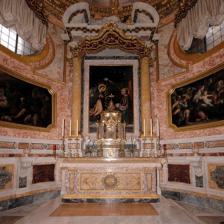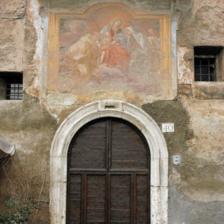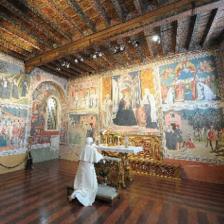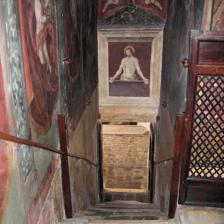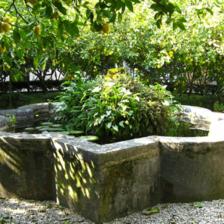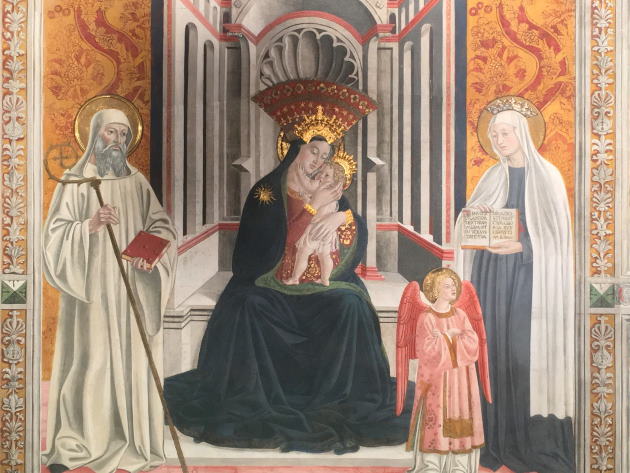
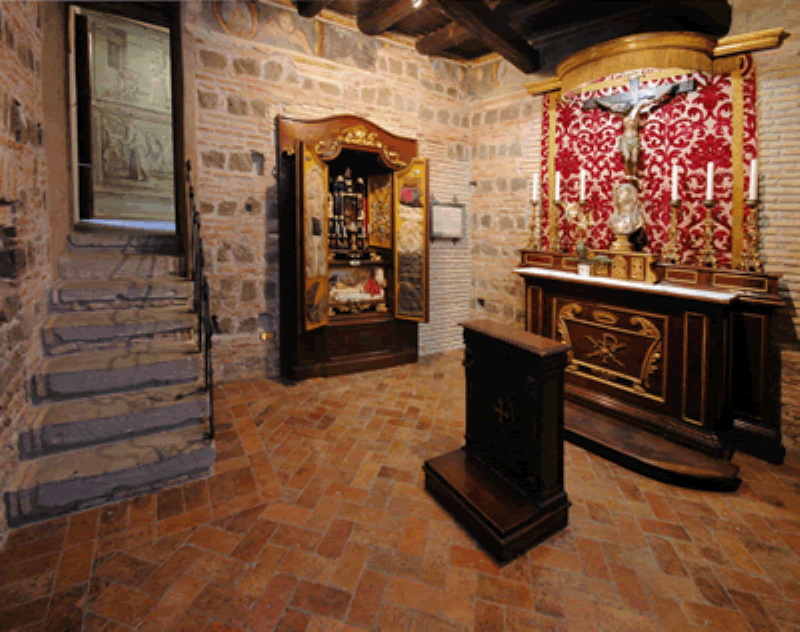
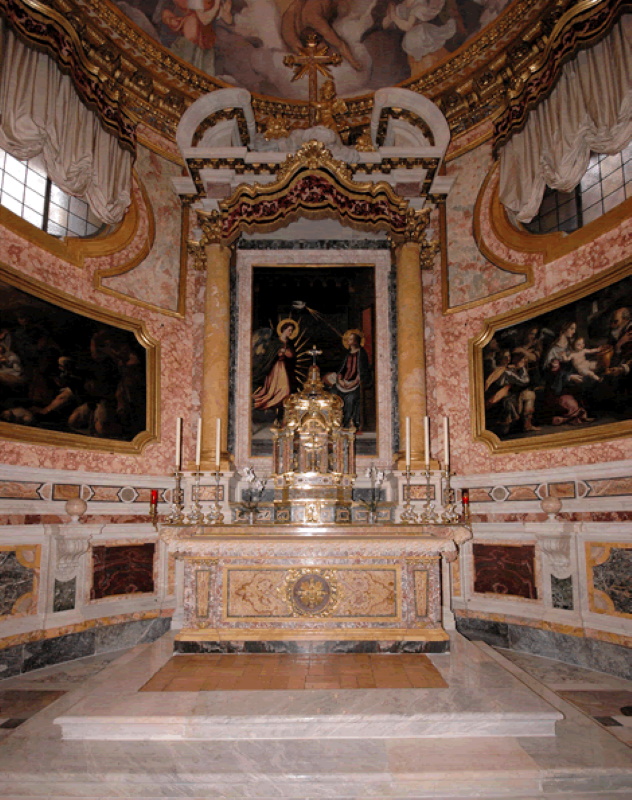
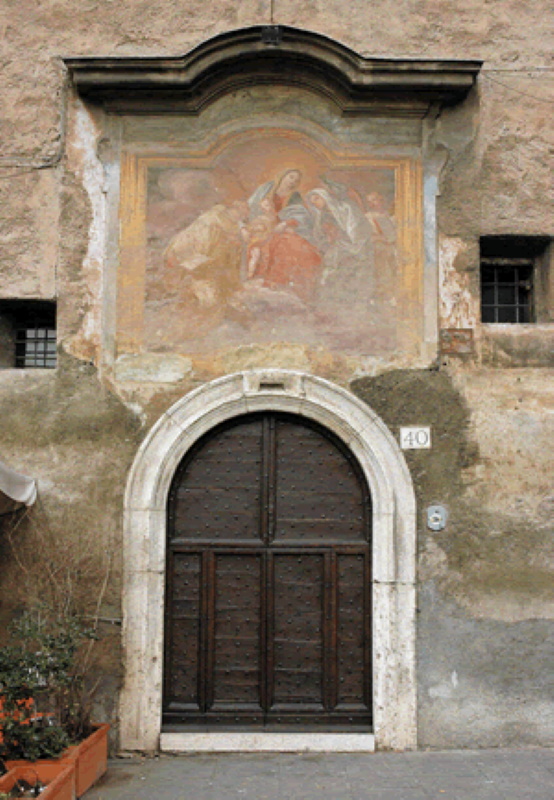
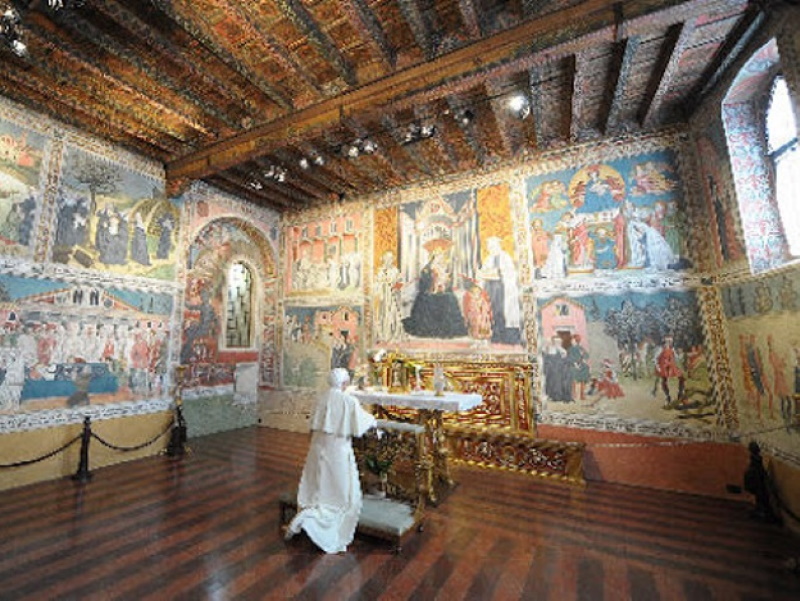
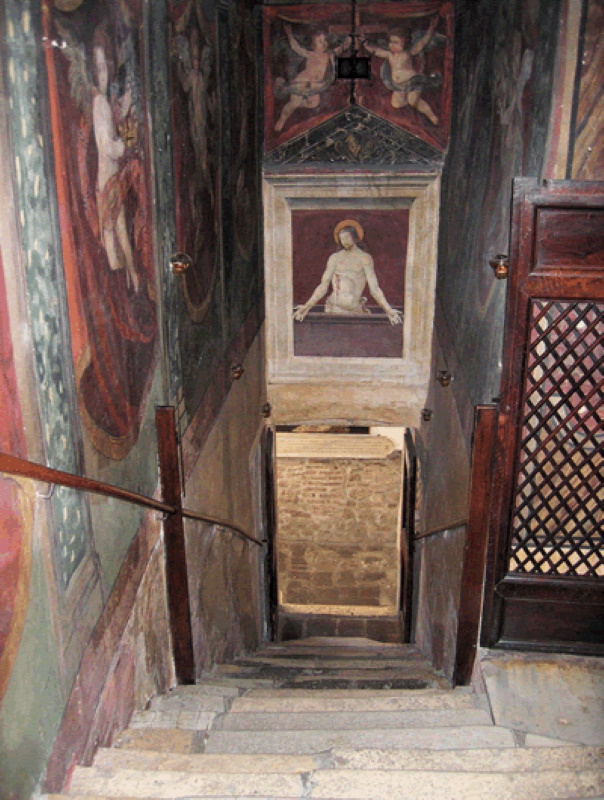
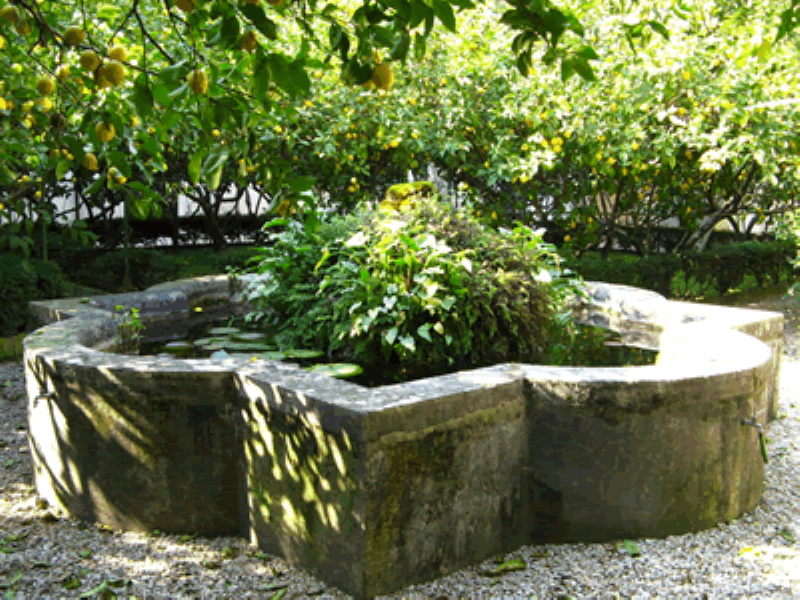
Situado al pie de la Colina Capitolina, entre la basílica de Santa Maria en Aracoeli y el Teatro de Marcelo, el Monasterio de las Oblatas de Santa Francesca Romana fue fundado por Santa Francesca Romana e inaugurado el 25 de marzo de 1433, día de la fiesta de la Anunciación. El proyecto religioso del santo fue revolucionario porque reconciliaba los ideales monásticos con los valores seculares. Las Oblatas, de hecho, aunque enclaustradas, estaban en contacto con el mundo exterior para realizar sus actos de caridad en favor de los más necesitados. En el siglo XVII, la comunidad contaba con 138 oblatas, algunas de las cuales pertenecían a familias nobles romanas como los Orsini, los Colonna, los Cenci, los Accoramboni, los Massimi, los Cesi y los Pamphilj.
En el número 40 de Via del Teatro di Marcello, una puerta coronada por un fresco que representa al Santo con el ángel y a San Benito flanqueando a la Virgen con el Niño da acceso a la parte más antigua del convento. El atrio, que en su origen fue una cuadra, aún alberga el antiguo pesebre que el santo utilizaba para repartir comida y ropa a los pobres, elaborado con la tapa de un gran sarcófago romano.
El oratorio está decorado con frescos del siglo XV: el ciclo narrativo se compone de 25 escenas y es obra de un pintor anónimo, quizás perteneciente al taller de Antoniazzo Romano. Cada fresco, que lleva un título en la lengua vernácula romana de la época, representa una documentación importante del lenguaje de la época y atestigua la relación de la santa con la ciudad. El último también informa el año (1468) en el que presumiblemente se pintaron todos los frescos. Además de la vida de la santa, las imágenes dan testimonio de la vida de la ciudad en el siglo XV. El refectorio, con frescos centrados en la Roma del siglo XVII, conduce a la celda donde vivió la santa desde 1436 hasta 1440, año de su muerte, y en la que se conservan algunas de sus vestimentas.
En la parte más moderna del monasterio, en el número 32, el patio porticado adornado con el escudo de Monte Oliveto conserva algunas lápidas, entre ellas la del padre de Santa Francesca Romana. Aquí también se encuentran los restos de la iglesia de Santa Maria Liberatrice al Foro Romano, demolida en 1902 para sacar a la luz los restos de Santa Maria Antiqua. Desde la sala de audiencias se accede a la iglesia que se divide en baja y alta. En la inferior, denominada Santa María de Curte o capilla baja, se exponen los papeles pintados originales del siglo XVII obtenidos con incrustaciones de paja durante la Semana Santa. El interior tiene tres naves separadas por pilares hexagonales. El ábside contiene paneles de estuco blanco y dorado que representan la Presentación de Jesús en el Templo y la Presentación de la Virgen (1662). En el centro hay una imagen de la Virgen con el Niño que data del siglo XVII. En la pared de entrada se conserva la pila donde, aún hoy, se prepara el ungüento milagroso según la receta de Santa Francesca. La iglesia superior, o Santa Maria Annunziata, celebra el recuerdo de la inauguración del monasterio que tuvo lugar el día de la fiesta de la Anunciación y presenta un atrio con frescos del siglo XVIII, un techo de madera tallada y un suelo de mármol policromado.
El 9 de marzo de cada año, el monasterio de estricta clausura se abre al público con motivo del aniversario de la muerte del Santo y del antiguo rito de la Bendición del Ungüento y de las cintas para las mujeres próximas a dar a luz.
El nombre Torre degli Specchi (Torre de los Espejos) se atribuye a la forma redonda de las ventanas de una antigua torre que formaba parte del complejo, o quizás al nombre de las herramientas para hilar y cardar la lana que utilizaban los artesanos de la zona.
Créditos de las fotografías: Monasterio de las Oblatas de Santa Francesca Romana en Tor de' Specchi
Informaciones
For the timetable of the masses and visiting conditions, please consult the contacts.
9 March of every year, feast of Santa Francesca Romana
 Condividi
Condividi
Location
Para conocer todos los servicios de accesibilidad, visite la sección Roma accesible.












































